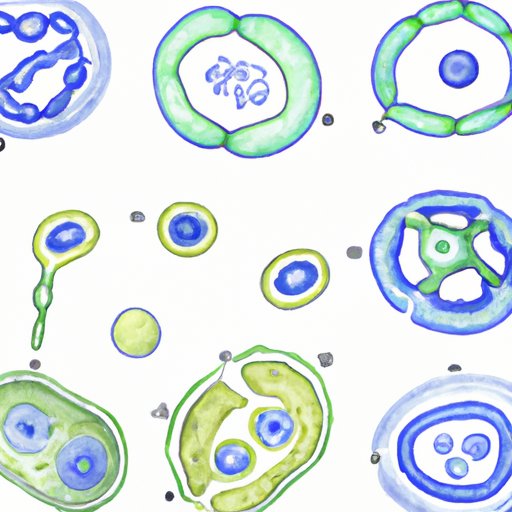Introduction
Prophase is the first stage of mitosis, a process of cell division that allows the genetic material to be equally distributed between two daughter cells. Prophase is a key stage as it prepares the cell for the subsequent stages of mitosis. In this article, we will explore the physical changes that occur during prophase, including the breakdown of the nuclear envelope, chromosome condensation, and spindle fiber formation. We will also discuss the role of microtubules and centrosomes in prophase.
The Physical Changes of Prophase
During prophase, several physical changes occur in the cell, setting the stage for the later stages. One of the most significant changes is the breakdown of the nuclear envelope, which separates the nucleus from the cytoplasm. This breakdown allows for the genetic material to be accessible for cell division. As the nuclear envelope breaks down, microtubules, which are long, thin tubes, start to form at opposite poles of the cell. These microtubules connect to the centrosomes, another cell structure that is essential for mitosis.
Another significant change during prophase is the condensation of the chromosomes, which are long strands of DNA in the cell’s nucleus. In order for these chromosomes to be equally divided between the two daughter cells, they must be tightly coiled and condensed. This condensation allows for easier and more accurate chromosome separation during later stages of mitosis.
Overall, these physical changes during prophase ensure that the genetic material is organized and accessible for proper cell division.
The Role of Microtubules and Centrosomes
The microtubules and centrosomes that form during prophase play a crucial role in mitosis. Microtubules are long, thin protein fibers that are part of the cytoskeleton of the cell. They are responsible for moving organelles and other cell components around the cell. During prophase, microtubules attach to the centrosomes, which are structures near the nucleus that act as the cell’s microtubule organizing center.
As the microtubules connect to the centrosomes, they start to extend outwards, forming a network of fibers called the spindle apparatus. The spindle apparatus is responsible for separating the chromosomes during later stages of mitosis. The centrosomes also play a role in organizing the spindle apparatus, ensuring it is correctly aligned for the later stages of mitosis.
Overall, the microtubules and centrosomes that form during prophase ensure that the genetic material is accurately and equally distributed between the two daughter cells.
How Prophase Sets the Stage for Later Mitosis Stages
Without the physical changes and structures that occur during prophase, later stages of mitosis could not occur accurately. By breaking down the nuclear envelope, the genetic material becomes accessible for proper chromosome separation. The condensation of the chromosomes ensures that they are equally divided. The formation of the microtubules and centrosomes ensures that the spindle apparatus is organized correctly. Overall, prophase is essential for the accuracy of later stages of mitosis and therefore for proper cell division.
Conclusion
Prophase is a critical stage in mitosis, allowing for the genetic material to be accurately and equally divided between two daughter cells. The physical changes and structures that occur during prophase, such as the breakdown of the nuclear envelope, chromosome condensation, and spindle fiber formation, ensure that the later stages of mitosis can occur accurately. Without prophase, proper cell division would not be possible.
